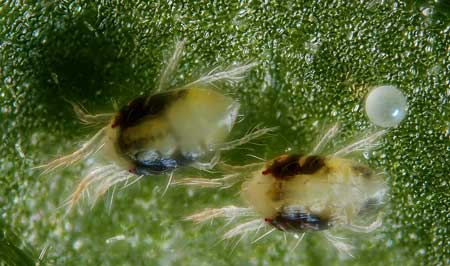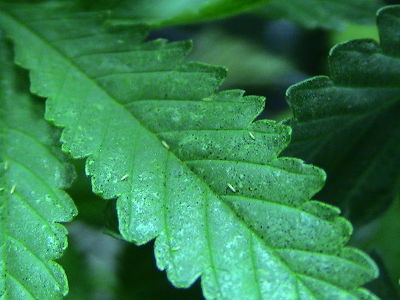This is the week your cannabis plant really comes into its own, producing the sort of big jagged leaves you’ve been waiting for. The plant produces so much more foliage because it’s now capable of absorbing and processing a much higher amount of carbon dioxide and other nutrients.
What your leaves tell you about your plant?
Your leaves can tell you a lot about your plant. Keeping a keen eye on both the top and bottom of your plant leaves, you may notice something.
-
Pests can be seen on the leaves. Leaf miners can leave silvery trails & tunnels across your leaves. Spider mites bite the leaves and leave small white spots, eventually webbing everything up. They can be found on the underside of leaves.
-
Leaf Septoria is a fungus that is often misdiagnosed as one of many nutrient deficiencies. Yellow spots early in flower, followed by leaves turning brown/yellow and falling off. This can quickly wipe out a plant if not caught early.
Are my plant’s roots healthy?
While your air pump is delivering oxygen to your roots, they can sit directly in the nutrient solution. Your roots should be white or cream in colour with no brown or sliminess on them. Your roots are very important, as they are the delivery system for the nutrient uptake.
Low Stress Training
Low Stress Training or LST is like bonsai for cannabis plants. It’s the practice of gently bending stems and tying them in place to drastically change the shape of the plant. This is done to create multiple bud sites, even out the canopy, and overall help you use light more efficiently. Using LST can increase marijuana yields without changing your setup. Low stress training is used to form a relatively flat, even canopy. This exposes many bud sites to direct light instead of just the top main bud. As a result, trained marijuana plants naturally create more (and bigger) buds in the same environment or setup than untrained plants. I use the drying rack to form a horizontal anchor point on both sides and the back of the unit.
There might be intruders on your plant!
Spider mites are a part of the mite family and are related to spiders, ticks and other mites. They are a common cannabis pest that can devastate your grow. They are tiny and found on the underside of your leaves. They puncture the leaf with their mouth and suck out the plant juices. You will know you have them on your plant when the top of the leaf has many small white/yellow circles on it.

Thrips are small, fast-moving insects and can come in many forms, from pale wormy looking things to dark winged insects, depending on the stage of life and where you live. They are often found on both the top and bottom of leaves, and can be seen by the distinctive silver or bronze trail they leave behind. It’s been described as looking like a snail trail or dried spit.

Share your awesome looking plant!
You are nearing the end of your vegetative growth stage, time to snap a picture and share it on All Growers.
Temp & Humidity
Temperature is important to your cannabis plant. If it’s too hot or cold for you, your plant is feeling the same. Temps lower than 15C (60F) will upset your plant, slow it’s growth and could cause death overnight. Temps higher than 26C (80F) will also upset your plants, make them susceptible to root rot, nutrient burn, spider mites and powdery mildew. Keep your temps moderate and your plant will be happy and healthy.
